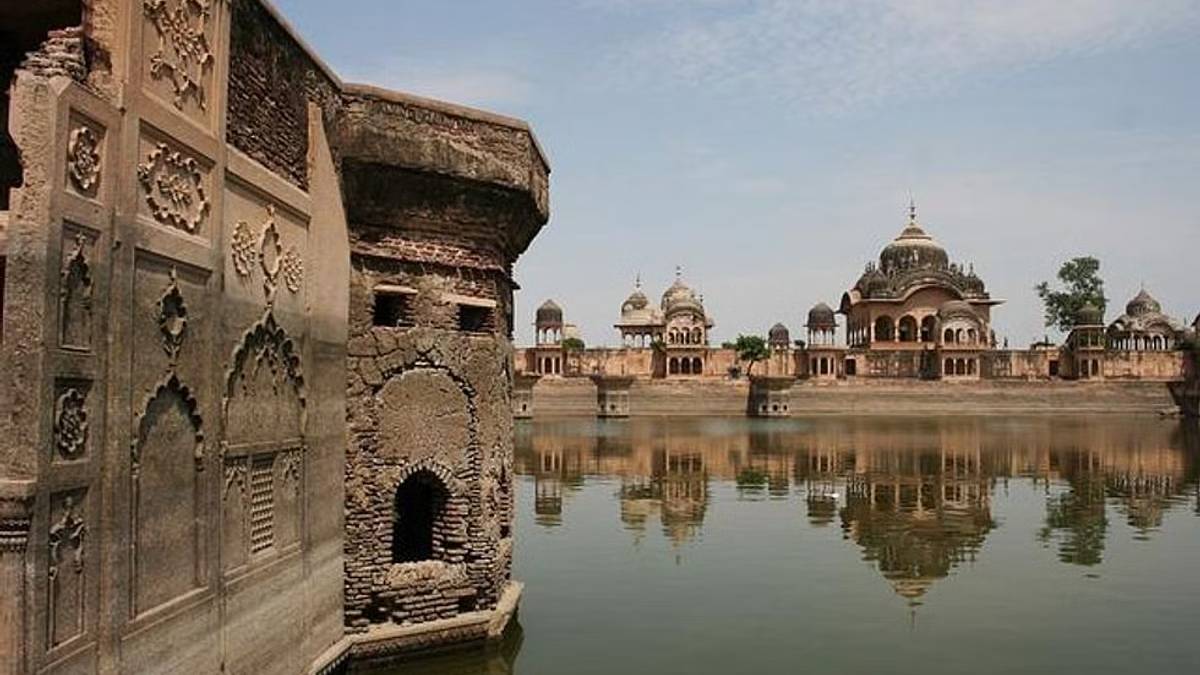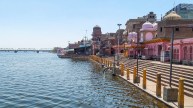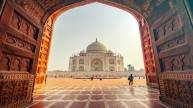 – Brij Khandelwal
– Brij Khandelwal
Vrindavan: Unplanned and unbridled construction activity has turned Sri Krishna Land Braj Mandal grey and brown, from the dense green it once used to be.
From Barsana, Goverdhan, Gokul, Mathura to Vrindavan, visited by millions of devout Hindus around the year, the frenzied construction activity has ‘devastated the local ecology,’ say concerned environmentalists of the area.
In the Braj area extending from Vasudev’s Bateshwar in Agra district to Kosi in Mathura and Kaamvan in Rajasthan, the transformation of the landscape is a cause for worry. All one gets to see around are the concretization of pavements, tar roads, pucca houses, structures on encroached water bodies, and the disappearance of dense mangroves. Wild animals have become extinct and the local species of flora has been badly hit. The smaller streams and vast community ponds have become invisible. Forests have disappeared without a trace, only the names remain.
Historical records say the Braj Mandal once had a dozen dense forests, starting with Agrvan, which probably became Agra, to Kokilavan, Mahavan, Kaamvan, Vrindavan, etc. These forests with sprawling water bodies (Kunds) provided the backdrop of Krishna’s Leelas (frolics or dances with Gopis and Radha.) But sadly now the whole area is turning into a cement-concrete jungle.
Huge market complexes and multi-storeyed apartment buildings have come up in Vrindavan. A large number of spacious ashrams and modern temples dot the Chatikara road from the national highway to Vrindavan’s famous Bankey Bihari temple which has seen a series of stampedes and accidents in recent years, leading to demands for the construction of a safe corridor like the one in Varanasi. “It is tragic to see the Yamuna flood plains usurped by unscrupulous land colonizers. The river bed is full of illegal structures. Roads and temples have been built on encroached land. This monsoon season, we saw the Yamuna waters entering these colonies and inundating the roads, the Parikrama marg, and the ghats. But the district administration has not bothered to clear the unauthorized structures,” lamented Jagan Nath Poddar, convener of the Friends of Vrindavan, engaged in greening the holy town.
“Instead of trees, you have multi-storeyed apartment buildings coming up all over. Where are the sacred forests where Sri Krishna frolicked with gopis and thousands of devouts meditated for salvation? The green cover has vanished. The dominant colour is brown and gray today. The holy town has several hundred foreign “bhakts” seen chanting “Hare Krishna” while performing the “parikrama”– circumambulation of sacred places — along the Yamuna,” but the original ambiance of the Braj, that attracted saints and reformers in the past, has disappeared. “The glitter and dazzle are all there but the spiritual fervour and flavour, are sadly missing,” Poddar added.
Noise from gadgets and thousands of vehicles entering the holy town daily from Delhi, Haryana, Punjab via the Yamuna Expressway, have added to the pollution. “You now have five-star guest houses and modern dhabas dotting the area, which have overwhelmed the serene atmosphere of Braj Mandal. On public demand, a ropeway in Barsana is being provided for the Radha Rani temple. Liquor shops are doing brisk business as are scores of high profile English medium schools,” notes a regular pilgrim from Agra, Rajiv Gupta, president of Lok Swar.
Not only Vrindavan, other religious shrines associated with the Sri Krishna lore, Goverdhan, Gokul, and Barsana, are fast losing their pristine pastoral colour and succumbing to so-called “development lobby pressure.” The local MP cine actor Hema Malini prides in listing her developmental projects that have fundamentally changed the religious and spiritual flavour of Braj mandal. “The first mega project to hit the ecological balance was the Mathura refinery and then followed the systematic denudation of forest land, destruction of water bodies which once numbered more than a thousand. Development has changed the ecology of the area,” said green activist Devashish Bhattacharya.
The Yogi Adityanath government constituted the Braj Teerth Vikas Parishad, headed by a former IPS officer Shailjakant Mishra. The Board has taken up major developmental projects for the convenience of pilgrims. Goverdhan now has a new bus stand and a multi-level parking area. “In the past ten years, an extensive road network connects all major shrines and towns of the Braj. This has helped in bringing in more tourists and pilgrims who enjoy comfortable rides in electric buses. Each year Mathura, Vrindavan, and other shrines are visited by several crore devotees of Sri Krishna Radha. For them, we need guest houses, Dharamshalas, shelters, restrooms, and parking slots. The local administration is trying to balance the need for development with sustainable ecology,” an official of the MVDA said.
Local environmentalists blame large-scale construction and extensive sheet-piling activity on the floodplains of the Yamuna River for the steep decline in the water table of Vrindavan.
The quality of water pumped out has also suffered. In many places, it is muddy and black. The Yamuna remains dry for most part of the year. What flows down is waste, sewerage, and industrial effluents from upstream industrial clusters. The groundwater level of Vrindavan is entirely dependent on the Yamuna as the town is surrounded by the river on three sides. The percolation recharge of Vrindavan’s groundwater is determined by the river’s water level.
The floodplains have been a self-recharging and self-sustaining aquifer for the city’s water. The illegal dumping of debris, construction rubble, and the extension of settlements on the floodplain are the chief reasons for the groundwater not being adequately recharged.
“Unfortunately all over the Braj area, including Goverdhan, Barsana, Gokul, and Mathura, one sees unprecedented construction activity, often without permission. The world’s tallest Sri Krishna temple being built in Vrindavan by ISKCON has given a spurt to construction activity all around. How local ecology will bear the pressure of increased demand for water and resources, remains to be seen.










